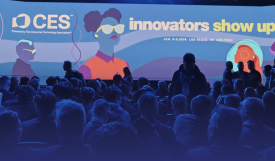The Youthful Latino Consumer Population Has More Years of Effective Buying Power Than any Other Group
The "ambicultural" and youthful Latino consumer population has more years of effective buying power that any other consumer group, and Latinos are using that purchasing window to endorse brands that observe the nuances of their heritage and culture.
"The Multicultural Edge: Rising Super Consumer," a recent study published by The Nielsen Company, demonstrated that Latinos average 19.8 more years of effective buying power than non-Hispanic whites. Latinos have 56.5 years of effective buying power; compare that to non-Hispanic whites (36.7 years), African Americans (42.3 years) and Asian Americans (52.3 years). Also, the life expectancy for U.S. Latinos (83.5 years) was only second to Asian Americans (87.3 years), and Latinos' median age is younger than any other group (27 years versus 42 years for non-Hispanic whites).
The report also addressed multicultural consumerism, and the habits of the mounting Latino population that have changed the mainstream market. The duality that Latinos own, in regard to nationality, race and language, is a source of strength and optimism. By 2019, Latinos will have $1.7 trillion in purchasing power, and they're eagerly looking to embrace technology and support brands that see the value of inter-generational families and social aspirations.
The tremendous $3.4 trillion in multicultural buying power comes from the pockets of young, diverse consumers who are interested in the cultural appeal of brands, products and activities. This magnifies a need for ethnic and cross-cultural marketing to address the new mainstream, who over-index in many categories, including dairy, baby food and diapers, laundry supplies and detergents, school supplies, and other family goods.
Their influence as trendsetters and tastemakers has helped to push once-ethnic foods (soul food, sushi, tacos, spring rolls, pizza, etc.) into the forefront, making those items as American as apple pie. Multicultural shoppers are social, tech savvy and rigorous researchers, which makes them confident shoppers. And this segment is also culturally driven, expressive and inclusive, and they have enough economic clout, youth and numbers to define the future.
There are 56 million Latinos in the U.S., representing 17.6 percent of the population, and by 2060, Latinos will represent 29.3 percent of the population. Today, Latinas are expected to have 2.2 children in her lifetime, which is higher than non-Hispanic whites (1.8) and non-Hispanic blacks (1.9). Among multicultural consumers, Hispanics will experience the most growth. In just five years, Latinos will account for half of all U.S. growth, and by 2050, Latinos will account for 85 percent. There will also be a significant growth among those claiming multiple races, representing 22.7 percent of growth by 2040.
The southern half of nation has the largest collection of multicultural populations. And Latinos dwelling in Los Angeles (79 percent) and Houston (75 percent) tend to be Mexican, while in the upper eastern part of the nation the Latino is a little more diverse. Salvadoran represent 29 percent of Latinos in Washington, D.C. and 49 percent of Latinos in New York City are Caribbean. With that knowledge, marketers can work at the local level to know what insights to derive from Latino populations dwelling in particular areas.
Across all subgroups, Latinos are fans of toiletries, fragrances and refrigerated juice drinks. The top 10 items that Latinos spend most of funds on are vegetables and dried grain, hot sauce, women's fragrances, family planning, books and magazines, hair care, men's toiletries, baby needs, baby foods and disposable diapers. Thanks to their ambicultural identity, Latinos also mix and match choices. They'll easily any ramen noodles, sriracha sauce, dulce de leche ice cream and/or hip hop music.
Technology has held to build the bridge for product exploration and consumer growth. And being that 86 percent of Latinos use their mobile devices to browse the Internet, where they easily tune into social media (Instagram, Tumblr, Snapchat, FourSquare, Twitter and Facebook), product sites and more to learn about products.
Subscribe to Latin Post!
Sign up for our free newsletter for the Latest coverage!
© 2026 Latin Post. All rights reserved. Do not reproduce without permission.















